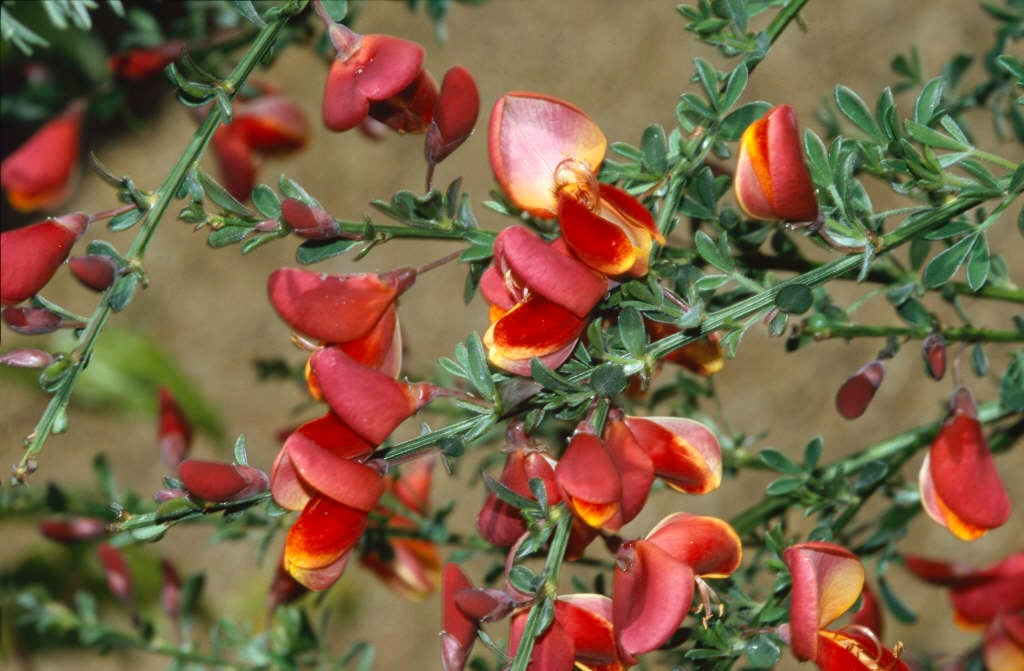Size
Ultimate height
1–1.5 metresTime to ultimate height
5–10 yearsUltimate spread
1–1.5 metresGrowing conditions
Moisture
Well–drainedpH
Acid, Alkaline, NeutralColour & scent
| Stem | Flower | Foliage | Fruit | |
| Spring | Red Yellow | Green | ||
|---|---|---|---|---|
| Summer | Red Yellow | Green | ||
| Autumn | Green | |||
| Winter |
Position
- Full sun
Aspect
South–facing or West–facing
Exposure
Exposed or ShelteredDrought resistance
Yes Hardiness
H5Botanical details
- Family
- Fabaceae
- Native to GB / Ireland
- No
- Foliage
- Deciduous
- Habit
- Bushy
- Potentially harmful
- Humans/Pets (dogs): Harmful if eaten. Wear gloves and other protective equipment when handling. For further information and contact numbers regarding pets, see the HTA guide to potentially harmful plants
- Genus
Cytisus can be deciduous or evergreen shrubs, ranging from prostrate to erect and almost tree-like, with small, simple or 3-parted leaves and pea-like flowers spring or summer
- Name status
Accepted
How to grow
Cultivation
Best grown in well-drained, poor acid soils in full sun. Tolerant of lime but may become chlorotic on shallow chalk soils. Brooms resent transplanting
Propagation
Propagate by semi-ripe cuttings in late summer or early autumn and hardwood cuttings in midwinter
Suggested planting locations and garden types
- City and courtyard gardens
- Coastal
- Cottage and informal garden
- Gravel garden
- Flower borders and beds
Pruning
Pruning group 1 or pruning group 3 but do not cut into old wood
Pests
May be susceptible to broom gall mites
Diseases
May be susceptible to honey fungus
Get involved
The Royal Horticultural Society is the UK’s leading gardening charity. We aim to enrich everyone’s life through plants, and make the UK a greener and more beautiful place.
